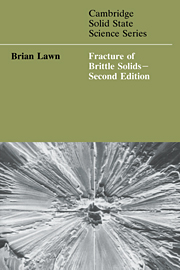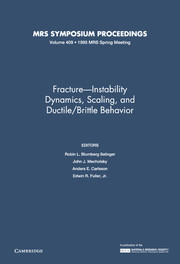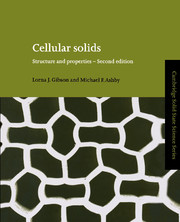Fracture of Brittle Solids
This is an advanced text for higher degree materials science students and researchers concerned with the strength of highly brittle covalent–ionic solids, principally ceramics. It is a reconstructed and greatly expanded edition of a book first published in 1975. The book presents a unified continuum, microstructural and atomistic treatment of modern day fracture mechanics from a materials perspective. Particular attention is directed to the basic elements of bonding and microstructure that govern the intrinsic toughness of ceramics. These elements hold the key to the future of ceramics as high-technology materials - to make brittle solids strong, we must first understand what makes them weak. The underlying theme of the book is the fundamental Griffith energy-balance concept of crack propagation. The early chapters develop fracture mechanics from the traditional continuum perspective, with attention to linear and nonlinear crack-tip fields, equilibrium and non-equilibrium crack states. It then describes the atomic structure of sharp cracks, the topical subject of crack-microstructure interactions in ceramics, with special focus on the concepts of crack-tip shielding and crack-resistance curves, and finally deals with indentation fracture, flaws, and structural reliability.
- Restructured from a first edition published in 1975
- A text for higher degree materials science students
- A cohesive account that emphasises basic principles rather than detailed factual information
Product details
No date availablePaperback
9780521409728
400 pages
229 × 152 × 23 mm
0.59kg
207 b/w illus.
Table of Contents
- Preface
- Glossary
- 1. The Griffith concept
- 2. Continuum aspects of crack propagation
- Part I. Linear Crack-Tip Field
- 3. Continuum aspects of crack propagation Part II. Nonlinear Crack-Tip Field
- 4. Unstable crack propagation: dynamic fracture
- 5. Chemical processes in crack propagation: kinetic fracture
- 6. Atomic aspects of fracture
- 7. Microstructure and toughness
- 8. Indentation fracture
- 9. Crack initiation: flaws
- 10. Strength and reliability
- References
- Index.







